This Heavy Duty (HD) 10 through 80-meter HF Base Antenna is perfect for permanent outdoor deployments when you need an incredibly robust solution.
Specifications
- Frequency Coverage: 3.5MHz to 30MHz
- Peak Power: 250 PEP SSB, 125 CW, or 25 watts for digital modes. NOTE – The MIL-STD-188 M110a digital communications mode is rated at bursts of 100 watts digital for up to 1 minute using the MIL-STD Data Modem Terminal (MS-DMT) and Automated Message Terminal (AMT) software applications.
Included
- One (1) 24″ x 5″ x 1/4″ heavy duty mount
- Two (2) 1.25″ U-bolt mounting hardware
- One (1) Alpha Auto Match with SO-239 and mounting hardware
- One (1) Self-supporting telescopic vertical element with six 3′ sections and 5 Stainless steel clamps
- One (1) 25-foot Wire NVIS Elements & Support stakes
- One (1) 8-foot Grounded Counterpoise wire & Ground stake (additional radials are NOT required)
Technical Information
This is a Heavy Duty (HD) HF Vertical Base antenna for 10 to 80 meters that is a 1 wavelength on 10 meters, 1/2 wavelength on 20 meters, and 1/4 on 40 meters. Operation on 15 meters is enabled, because it is a third harmonic of 40 meters. Additional tuning for resonance on these bands, as well as 12 & 17 meters, is accomplished by way of the included matching network. We also include the other half of the system that completes the circuit at the antenna, which is the grounded counterpoise element. The combination of these components makes this system similar to an OCF (off-center fed) Dipole.
Analysis
| Average SWRs | |
| Band | SWR |
| 10 Meters | 1.6:1 |
| 12 Meters | 1.7:1 |
| 15 Meters | 1.2:1 |
| 17 Meters | 1.3:1 |
| 20 Meters | 1.9:1 |
| 30 Meters | 1.7:1 |
| 40 Meters | 1.4:1 |
| 60 Meters | 1.7:1 |
| 80 Meters | 1.9:1 |
Installation
- Simply use our tripod or place a 10 foot long 1 1/4” O.D. metal mast 3 to 4 feet into the ground and install the included VERY heavy-duty mount and hardware on that mast with the included U-Bolts. Alternatively, the system can be mounted on a wood post using four of your own wood bolts once the two included U-Bolts are removed.
- Next, extend the telescoping element to an approximate length of 16′ 4.8″ and secure each section with the stainless-steel clamps, where each section is not extended beyond the prior sections’ slits.
- Then, attach the approximate 8′ 2.4″ grounded counterpoise wire to the bottom bolt on the grey match and run that wire to the included ground stake.
- Finally, attach the approximate 25′ wire NVIS element to the top bolt on the grey match and run that wire with the included stake in the opposite direction of the grounded counterpoise before attaching your coaxial feedline to the SO239 on the grey match box.
Alpha Antenna makes it better with CNC Machining!
Third-party masts
Place one of these optional masts approximately 3 feet in the ground:
Option 1 – Home Depot – YARDGARD 1-3/8 in x 10 ft 6 in 17-Gauge Top Rail-328913DPT
Option 2 – Lowes – LG055 GL CP 1-3/8X10-6 SE in the Chain Link Fence Rail
Option 3 – True Value – Chain Link Top Rail, 1-3/8 In. x 10.5-Ft. | True Value
Optional NVIS Kit
Activate lower band coverage and increase NVIS efficiency with the NVIS Kit.
Optional Tripod
The optionally available steel tripod has been tested for at least 2 years of continuous outdoor use, in non-saltwater environments. Our two-year outdoor test of this tripod revealed that it was still structurally sound and only showed signs of fading with some surface rust. That rust mainly appeared on and around its’ nuts and bolts.
If mounted on the tripod, you should secure the antenna if it gets too windy, and although the ProMaster antenna can be deployed in saltwater environments, we do not recommend the tripod be used 24/7/365 around salt water.
More Information
For the best multiband HF vertical antenna on air experience, simultaneously use the included elements that produce omnidirectional NVIS and directional DX.
Specifically, physically combining the HF Vertical aluminum mast and the wire NVIS element enhances high band directional DX (in the opposite direction the wire NVIS element is run) and mainly omnidirectional low band NVIS. Please note that the NVIS element should not lay on the ground but should slope away like a guy wire.
The included Grounded Counterpoise wire will run in the opposite direction of the wire NVIS element. This grounding then completes the balanced circuit at the antenna and provides a path to ground for common mode current and static build up on the elements.
(Note – Without the ground there would be no path for current, which means that there would be an open circuit and the system would not work as efficiently).
A low SWR across many bands is the nature of a well-balanced OCF Dipole that often uses a 4:1 Balun. The ProMaster is, however, usable on many more bands because it:
- Provides a balanced RF ground via the included 8′ grounded counterpoise wire,
- enables balance by using 2 radiating elements, namely the 17’ 6” Vertical element and 25′ wire NVIS element,
- uses a Balun where the impedance of each element is balanced,
- Provides a feed-point with a SO239 for your feedline to provide a near 50-ohm match for your coax and equipment.
The result of this broadband design makes the ProMaster perfect for ALE (automatic link establishment) or Digital Spread Spectrum Encrypted modes. The ProMaster is also effective for all other HF modes including, but not limited to CW, SSB (USB/LSB), AM, etc.
You may also use an external antenna tuner if the ProMaster either:
- Is installed over a poor ground,
- parallels a metal structure,
- is installed on a roof without adequate grounding, or
- is not placed in a clear area.
The appropriate deployment angles for the Grounded Counterpoise and NVIS elements are between 90 and 180 degrees, per the following image.
LOSSES and CHOICES
Losses on an OCF Dipole do exist, whether it has a 4:1 Balun that begins to heat up as its transformer becomes saturated, resulting in an increase in ‘losses’ as the frequency is decreased. The transformer in the ProMaster will work to enable a very tunable SWR on the bands it is designed for.
Even a single band Dipole in free space will have loss due to resistance of the wire elements, and from a Balun that is needed (unless ladder line is used) to change the naturally occurring (approximate) 72 ohms to 50 ohms. In this case, there will be less loss on lower bands compared to an OCF Dipole, due to the transformer that enables multi-band OCFD performance. Although ladder line has less loss than coax (especially for longer runs), you will eventually need to use a tuner/Balun to convert it to 50 ohms, as this is what a modern-day rig’s input/output requires.
You should install a 10 Meter Dipole antenna 5 meters high to minimize losses, a 20 Meter Dipole 10 meters high, a 40 Meter Dipole 20 meters high, etc. The most popular way to get positive gain over a dipole is to install a beam on a tower, where like a Dipole, the beam would need to be mounted in free space to minimize losses. There would still be a Balun to transform impedance.
A Vertical, which requires the real-estate to run the necessary radials, usually works well for DX, if you do not have obstructions around it. However, a Vertical is traditionally noisier, suffering from higher RFI (Radio Frequency Interference), which can hide a weak signal and cause loss of much of the NVIS capabilities that another antenna can provide. Aerials that will provide you with the best multiband HF vertical antenna experience are built upon basic antenna construction techniques.
So, which antenna should you choose?
Alpha Antenna recommends choosing an antenna based upon your:
- band requirements,
- physical needs,
- and surrounding environmental restrictions.
Alpha Antenna will always answer your calls and emails. We are here to help if you need any assistance determining what antenna might work best for you and are available after you purchase your Alpha Antenna system.
If you want a 10-80 meter HF base antenna, which is forgiving on how it is installed and works well, then the ProMaster is the obvious choice for you.
We listen!
Specifications, prices, and descriptions are subject to change without notice.
Reviews
| 5 star | 94% | |
| 4 star | 6% | |
| 3 star | 0% | |
| 2 star | 0% | |
| 1 star | 0% |

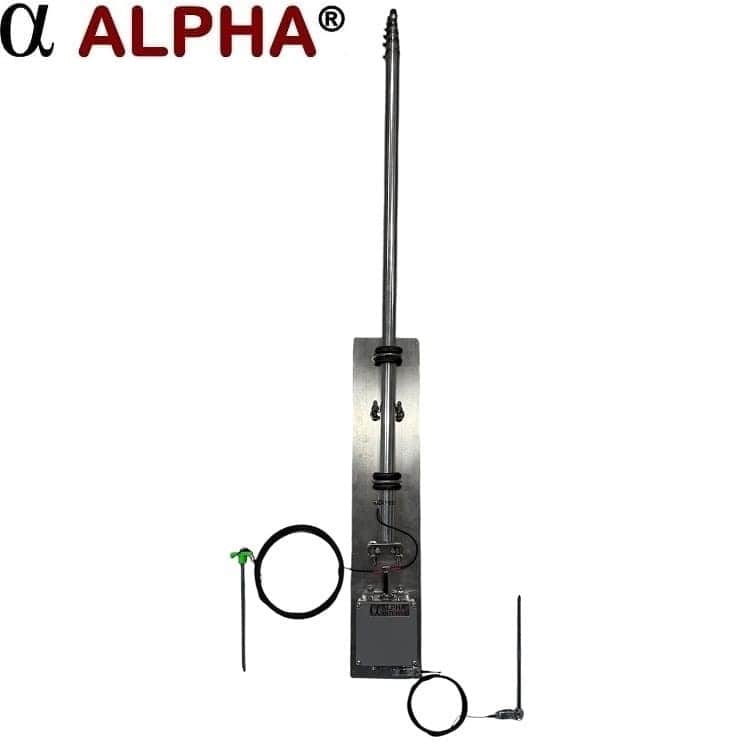
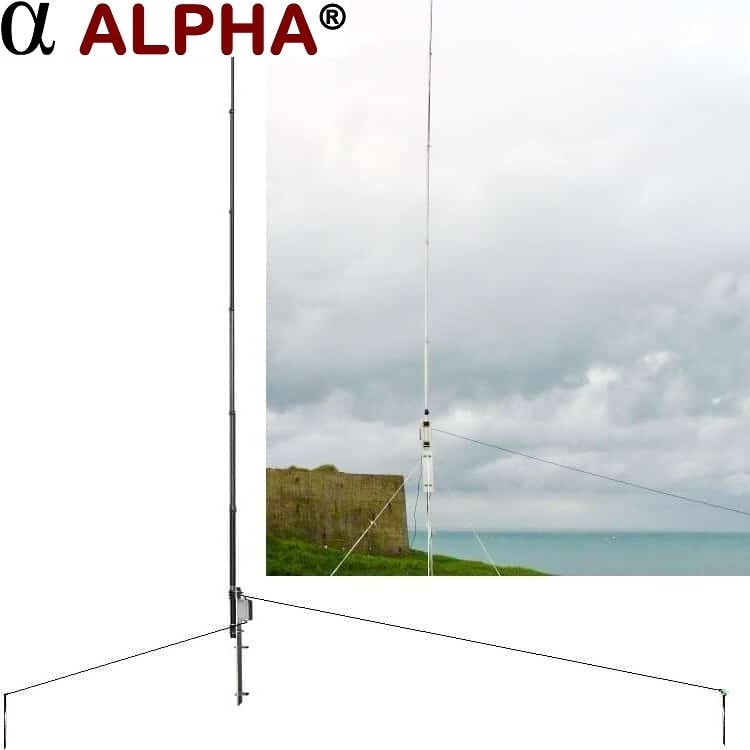
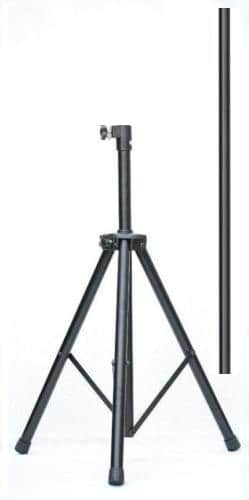
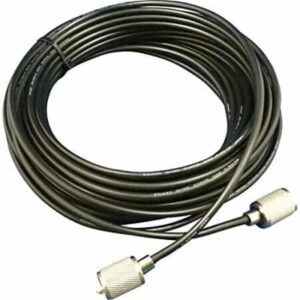
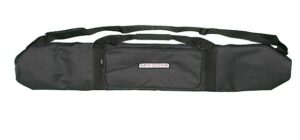
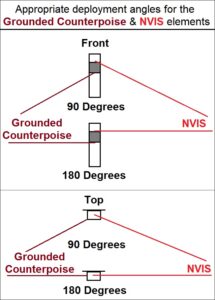
Works well. Good band coverage.
Does as advertised, well made, easy setup and looks nice. I use a good external tuner and get low SWRs. I haven’t tried connecting directly to the radio. Small property. I had an old vertical that was failing and replaced it with this 10-80m. I also have a 6-40m wire antenna and enjoy the flexibility having both.
Alpha Antenna is awesome to do business with. Communication and delivery was better than expected. Can’t wait to purchase again.
simple to use and robust
Interesting system. Ive added more elements than required and had good results, even on 160m with low SWR. Used more for rx and not noisy. Has also shown durability in winter operations.